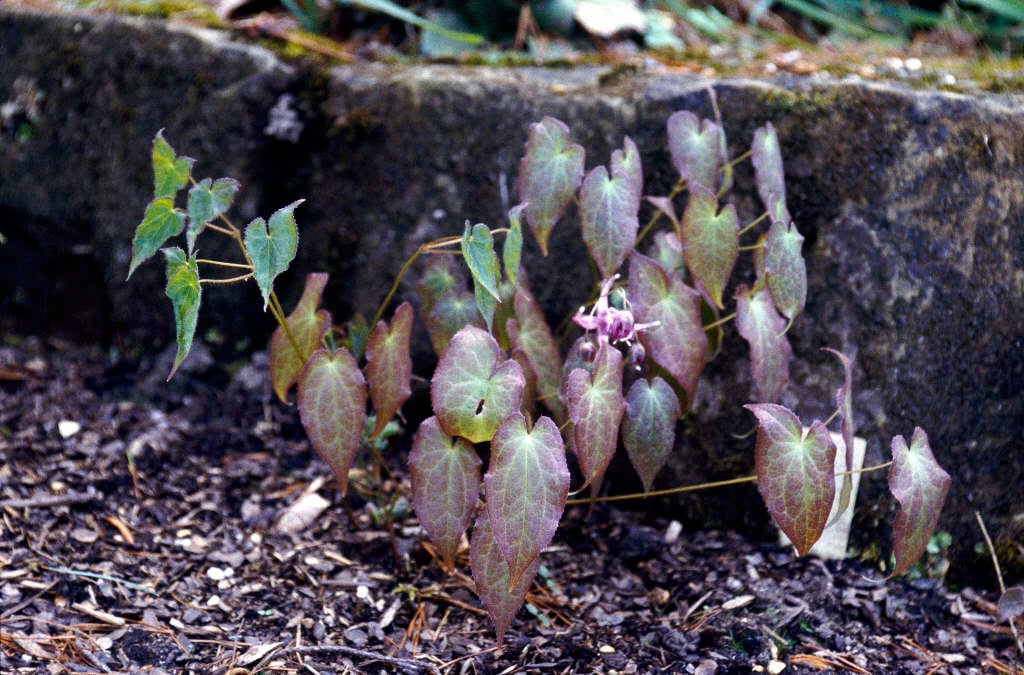Epimedium grandiflorum
large-flowered barrenwort
A deciduous perennial to 30cm, forming a compact clump of compound leaves with 9 or more, ovate leaflets, bronze-tinged when young. Flowers long-spurred, purple, pink, white or yellow, in open sprays

Buy this plant
Size
Ultimate height
0.1–0.5 metresTime to ultimate height
2–5 yearsUltimate spread
0.1–0.5 metresGrowing conditions
Moisture
Moist but well–drainedpH
Acid, NeutralColour & scent
| Stem | Flower | Foliage | Fruit | |
| Spring | Pink Purple White Yellow | Bronze Green | ||
|---|---|---|---|---|
| Summer | Green | |||
| Autumn | Green | |||
| Winter |
Position
- Partial shade
Aspect
West–facing or East–facing
Exposure
Sheltered Hardiness
H5Botanical details
- Family
- Berberidaceae
- Native to GB / Ireland
- No
- Foliage
- Deciduous
- Habit
- Clump forming
- Genus
Epimedium are rhizomatous perennials with evergreen or deciduous, ternately or pinnately divided leaves, and open sprays of small, bowl-shaped flowers, often with prominent spurs, in mid to late spring
- Name status
Correct
- Plant range
- Japan
How to grow
Cultivation
Grow in fertile, moist but well-drained, humus-rich soil in partial shade; shelter from cold, dry winds
Propagation
Propagate by division in autumn or after flowering
Suggested planting locations and garden types
- Cottage and informal garden
- Low Maintenance
- Garden edging
- Flower borders and beds
- Underplanting of roses and shrubs
Pruning
Cut back old foliage in late winter or early spring for the best display of new foliage and flowers
Pests
May be susceptible to vine weevil
Diseases
May be subject to a virus
Get involved
The Royal Horticultural Society is the UK’s leading gardening charity. We aim to enrich everyone’s life through plants, and make the UK a greener and more beautiful place.